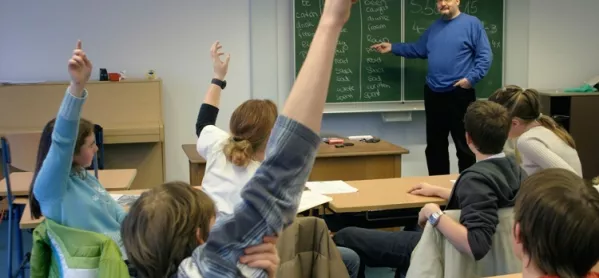Almost half of bright, poor students fail to get five top GCSE grades, a new report has found, compared with almost three-quarters of richer classmates with the same ability.
The Sutton Trust says that not only are poorer pupils are less likely to do well at the end of primary than their classmates, but those who do well are more likely to fall behind during secondary school.
Its study Potential for Success compares students whose Sats scores at the end of primary put then in the top 10 per cent of pupils.
Just 4 per cent of disadvantaged pupils scored in the top 10 per cent of their year group at the end of primary school, compared with 13 per cent of more advantaged children.
And the report reveals that by the time they take their GCSEs, 52 per cent of these disadvantaged pupils got at least five A* or A grades, compared to 72 per cent of non-disadvantaged students.
“If high-attaining disadvantaged students performed as well as high-attaining students overall, an additional 1,000 disadvantaged students would achieve at least five A*-A at GCSE each year,” the report said.
The Sutton Trust says that more evidence is urgently needed on how best to prevent disadvantaged highly-able students from falling behind.
“It is worrying to see that disadvantaged pupils with the potential for high achievement are falling behind their more advantaged peers,” said Peter Lampl, founder of the Sutton Trust.
“All pupils should be given the chance to realise their potential regardless of their background.
“We need better evidence of how to improve the attainment of disadvantaged highly able students. Schools should be monitored and incentivised to do this.”
The government has already announced its Future Talent Fund, a £23 million programme (including £18 million of government funding), to test ways of supporting this group - and the Sutton Trust says it is vital that the findings from this work are promoted to and implemented in schools.
It also suggests that:
- Ofsted inspections should routinely assess a school’s provision for disadvantaged students.
- GCSE attainment scores for poorer pupils with high prior attainment are published in school league tables.
- Teachers with more experience and subject specialism should have incentives to teach in disadvantaged schools.
But it warns that highly able students can be difficult to identify, and so says that support for the highly able should be as inclusive as possible, with any targeting being flexible and regularly reassessed. It adds that all students should have access to high-quality extra-curricular activities to boost essential life skills.
The research comes after the Sutton Trust’s Missing Talent report, published in 2015, which found one in three clever, poor boys falls behind at GCSE and called for all schools to be made accountable for the progress of their most-able pupils.
Today’s report said, as well as publishing school data on the performance of high attaining students, the government could publish data on the performance of disadvantaged high-attaining students to increase accountability of schools for this group.
A DfE spokesperson said: “The attainment gap between disadvantaged pupils and their peers has narrowed by at least 10 per cent since 2011 and our reforms to the curriculum are raising standards at both primary and secondary school.
“But we want to make sure everyone can reach their potential - that’s why we’re targeting support at some of the poorest areas of the country through our £72 million Opportunity Areas programme and our Social Mobility Action Plan is focusing £800 million of resources on helping disadvantaged children.”




